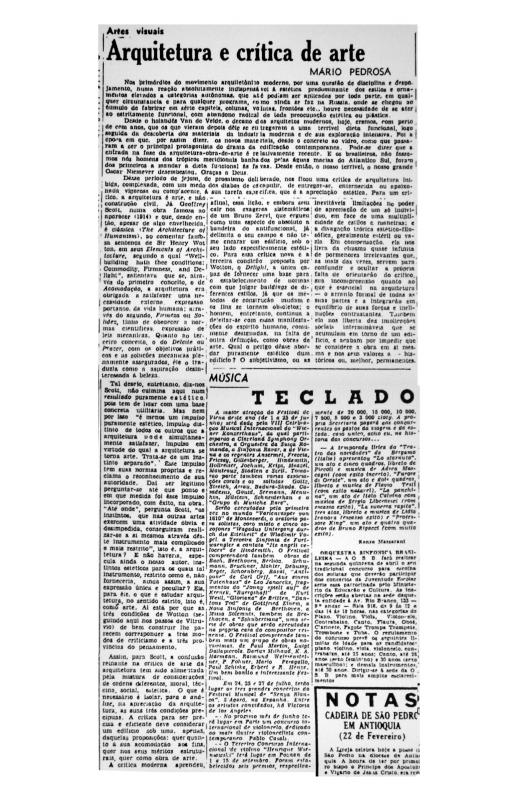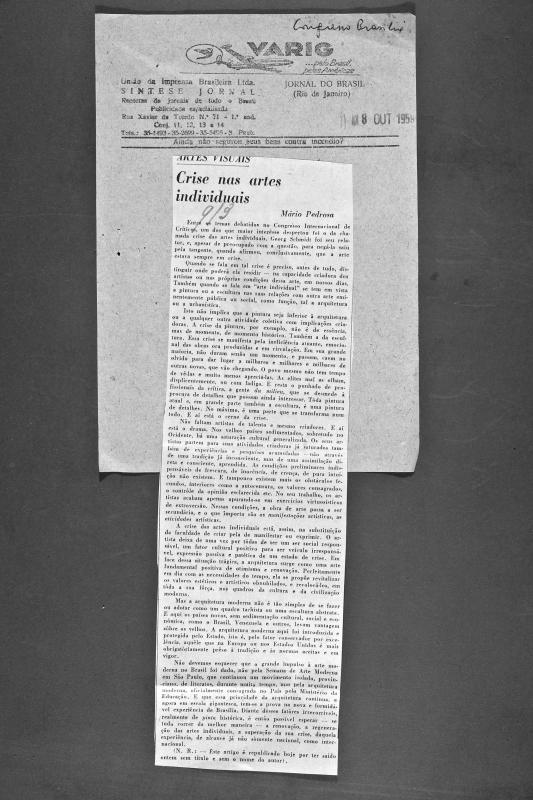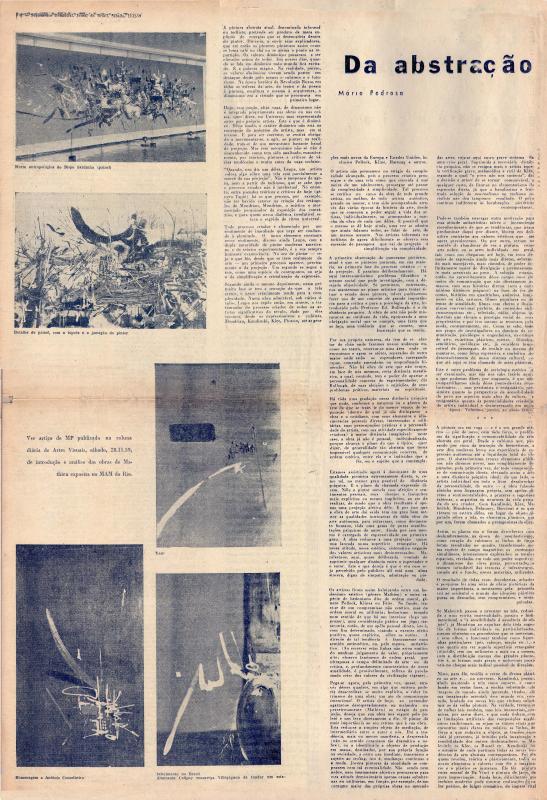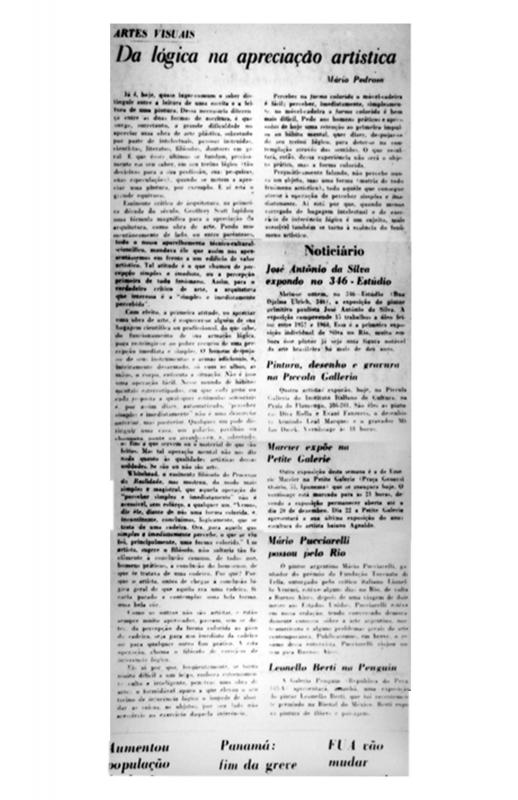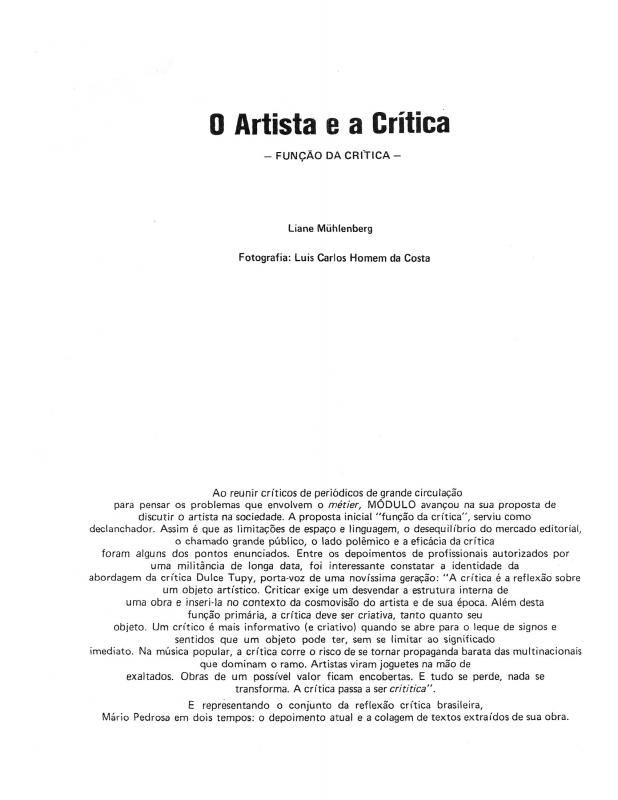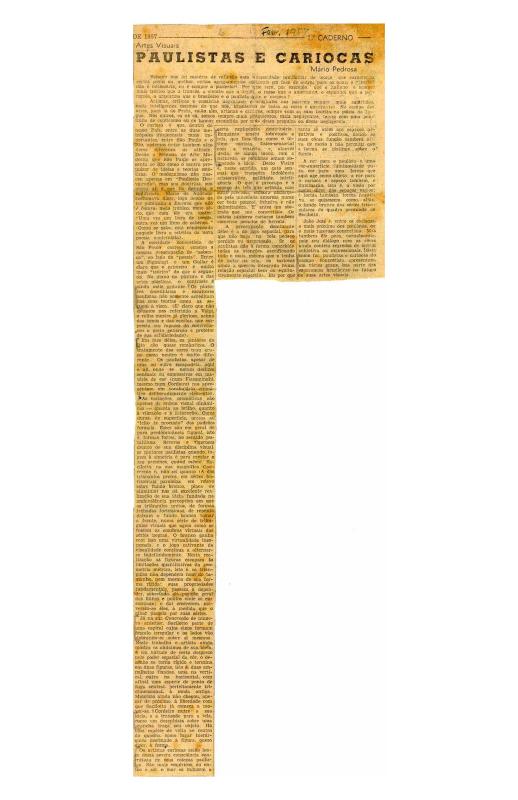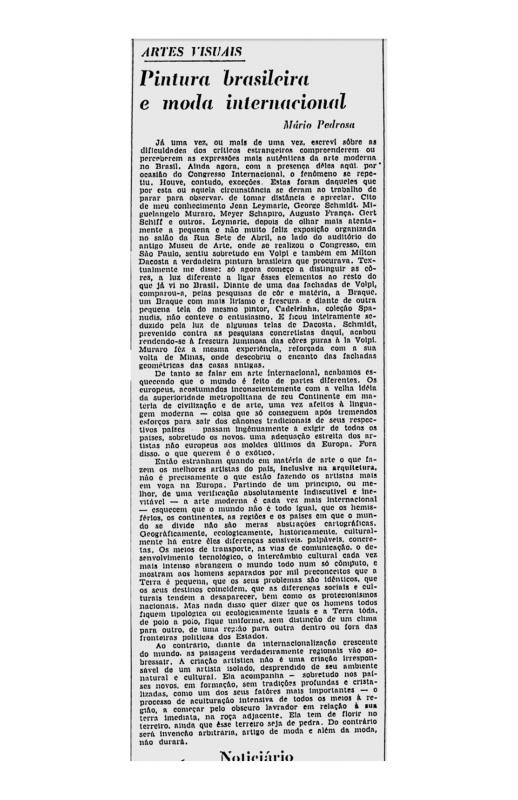Lecture delivered in the Salão da Associação Brasileira de Imprensa (ABI), which closed the show featuring the work of patients at the Centro Psiquiátrico Nacional, at the time it was under the direction of psychiatrist Nise da Silveira (located in the Engenho de Dentro neighborhood, Rio de Janiero). The show brought together the works of various patients, such as Fernando Diniz, Emygdio de Barros, Raphael Domingues, Adelina Gomes and Isaac Liberato, and in time it became a required reference for the psychological achievements of arts analysis, which was considered worthy of commentary and reporting by other critics such as Ruben Navarra, Antonio Bento, and Quirino Campofiorito. Pedrosa grounded his lecture in the theories of Gestalt [“form,” in a very broad sense] in order to explain the emotional and objective aspects of artistic form, highlighting its ability to re-condition the senses and re-educate human sensibilities. For Pedrosa, this argument revealed the vital nature of art, one destined to transform the individual and his community.
Mário Pedrosa (1900–81) was an intellectual and politician, and undoubtedly the key theoretician and critic on Brazilian art of the 20th century. He began as an international politics correspondent for the Diário da Noite, and beginning in the 1920s he was affiliated with the PCB (Communist Party of Brazil). He was imprisoned in 1932 because of his political militancy (Trotskyism). During the Estado Novo of Getúlio Vargas, he lived in exile in France and New York, and only returned to Brazil after the Second World War, when he worked for the Correio da Manhã. His stance against Stalinism led him to found the Vanguarda Socialista, a weekly publication. He presented a thesis on aesthetics called “Da natureza afetiva da forma na obra de arte” (1949) at the School of Architecture (Rio) that made use of his philosophical background, and his knowledge of Gestalt psychology; during that time he was also one of the founders of the AICA (1948) and also organized the International Conference of Art Critics (Brasilia, 1959). He wrote an arts column for the Tribuna da Imprensa (1950–54) and was an organizing member of the II and III São Paulo Biennials (1953 and 1955), later becoming director of the MAM-SP (1961–63). He served as secretary for the National Council of Culture during the brief government of Jânio Quadros. During the military dictatorship he took refuge in Chile, where he became director of the Museo de la Solidaridad in Santiago; after the Pinochet coup (1973), he left for Havana, where he served as secretary for the Museo de la Resistencia Salvador Allende. He only returned to Brazil in 1977 (at the beginning of the amnesty) and was the first to sign the manifesto creating the PT (Party of Workers, 1980). His vast library (which included eight thousand volumes) is partially available at the national library in Rio de Janeiro.
[As complementary reading, see the following texts by Mário Pedrosa in the ICAA digital archive: “Abstração ou figuração ou realismo?” (doc. no. 1085648); “Arquitetura e crítica de arte” (doc. no. 1086553); “Crise nas artes individuais” (doc. no. 1110406); “Da abstração a auto-expressão” (doc. no. 1085707); “Da lógica na apreciação artística” (doc. no. 1086587); “Debate: o artista e a crítica” (doc. no. 1110951); “Lições do Congresso de Críticos” (doc. no. 1110410); “Paulistas e cariocas” (doc. no. 1085056); “Pintura brasileira e moda internacional” (doc. no. 1126469); and “Problemas da pintura brasileira” (doc. no. 1075171)].

